Fast & Dirty
Björn Charpentier SBC / Beirut
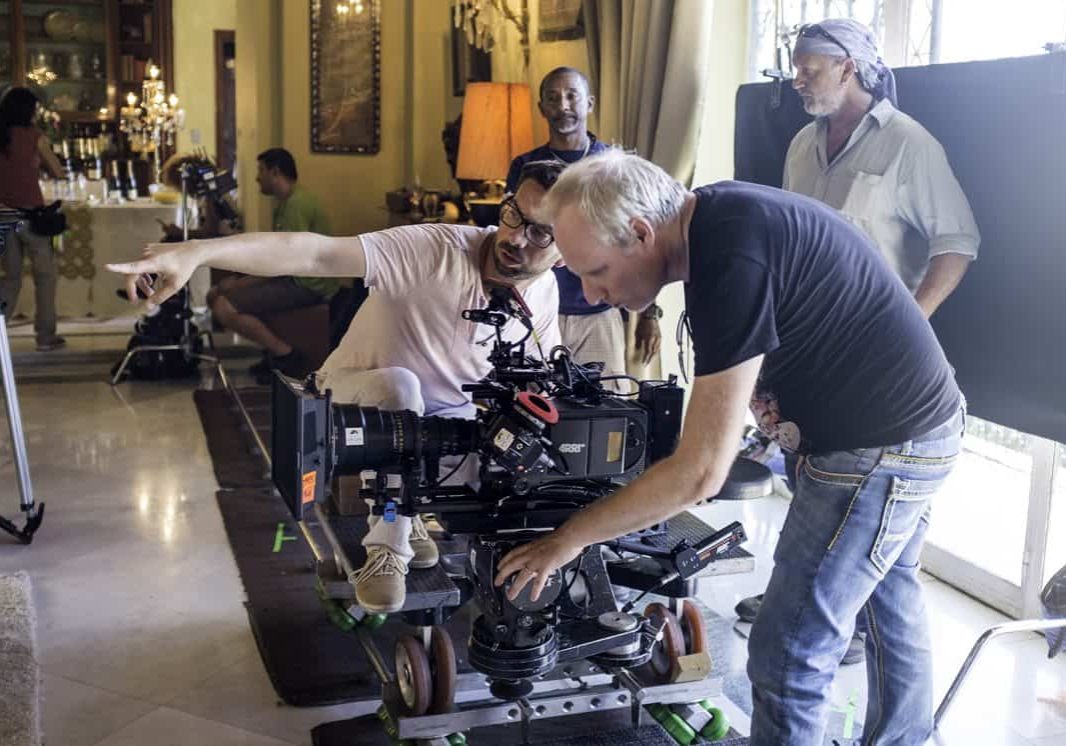
Fast & Dirty
Björn Charpentier SBC / Beirut
Header photo: (l-r) DP Björn Charpentier, Grip Malik Basar, 2nd Operator Olivier Merckx and Gaffer Thomas Hollaus.
Courtesy of Bleecker Street Media, Lionsgate and Björn Charpentier.
BY: Trevor Hogg
Upon graduating from the Narafi film school in Brussels in 2002, Björn Charpentier SBC began his career as an assistant camera operator and realized his ambition of becoming a cinematographer in 2008 working on commercials and short films; the transition into narrative moviemaking took place seven years later with his feature debut being Beirut directed by Brad Anderson (The Machinist ) and starring John Hamm, Rosamund Pike, Dean Norris, Shea Whigham, Idir Chender and Ben Affan. During the Lebanese Civil War, a former U.S. diplomat (Hamm) is tasked by the CIA to secure the release of his captured colleague.
After four weeks of prep, seven weeks of principal photography commenced in June 2016 for the political thriller that primarily took place in Tangier, Morocco with one day of shooting occurring in Boston. “Shooting 34 days straight was something new to me, but at the same time I always come prepared,” states Charpentier. “The movie has to be made in pre-production so we can execute the shoot more efficiently and still keep an open mind to see if we can make things better.”
Filmmaker Brad Anderson wanted a fast and dirty approach utilizing two cameras. “After we did our scouts, Brad and I talked about a shot list and storyboards; he wanted to create everything onset with the actors in the real surroundings. We knew our strong angles while the rest was created onset.”
Cinematic references for colours, light and camera movement were Chinatown, Argo, Se7en, Sicario and Gone Girl. “I proposed to Brad to shoot on anamorphic in a complete handheld style together with some zoom shots like they did a lot in the ‘70s,” remarks Charpentier. “It felt right because the main character Mason Skiles is a total mess and I wanted to make him a ghost when he comes back for the first time to Beirut; we played with reflections to make Skiles more transparent and kept him in the shadows. When he is in the U.S. I even painted the light bulbs blue to make everything cold around him.”
“Everything was shot on location with the exception of the two hotel rooms, which were built with green screen behind the windows,” states Charpentier. “It was actually the same room that the art department changed over night. One was set in the U.S. and the other was the main character’s hotel room in Beirut.”
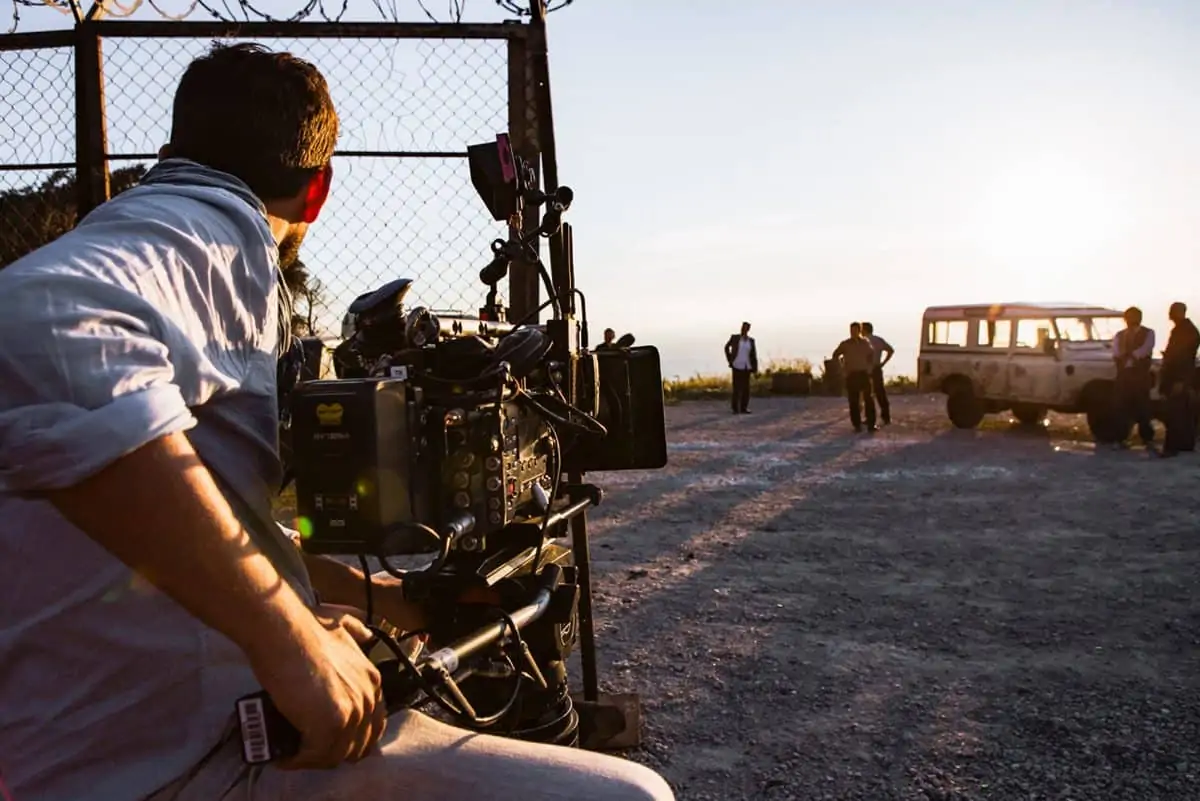
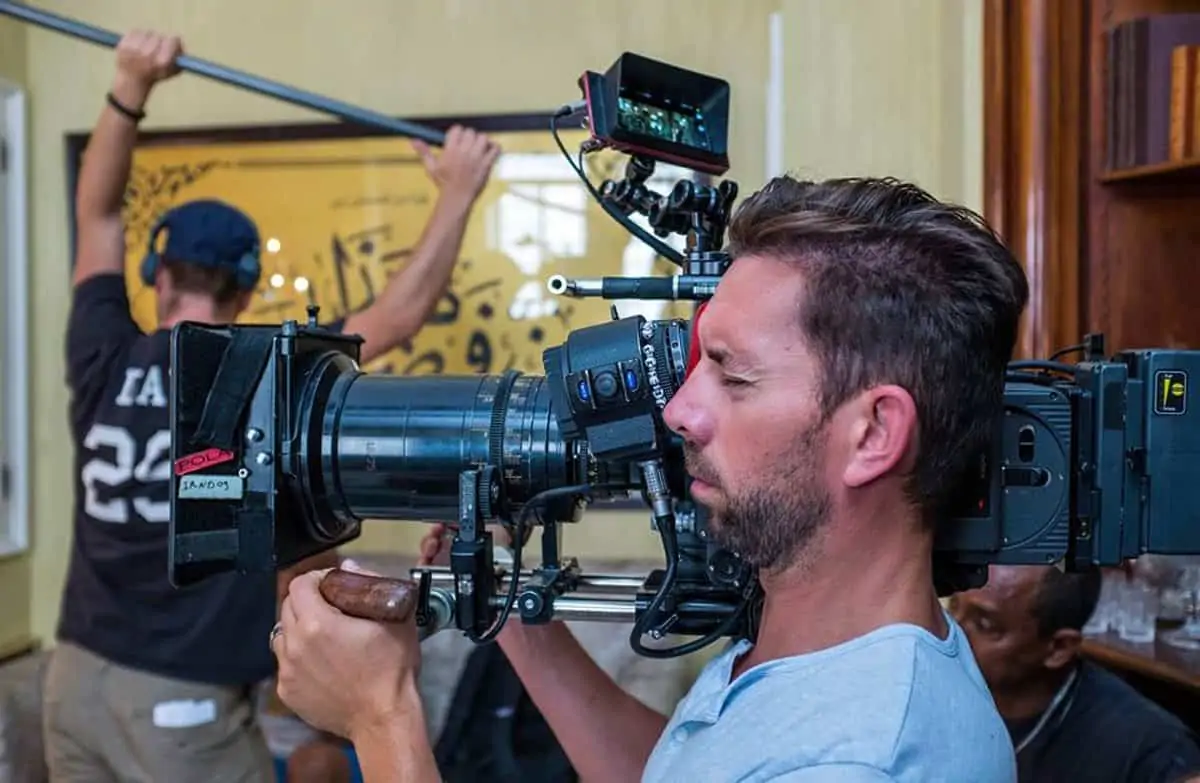
An organic approach was adopted for the shooting style. “The camera was always moving and panning around so we could keep the energy of the movement in one shot. The frame would always evolve to new characters or new backgrounds. Brad sometimes asked me to take the second camera out so I had complete freedom to move and ‘dance’ around the actors to keep everything energetic. B-cam was never B-roll as both cameras were shooting A-cam shots.”
In order to better capture the numerous low-light nighttime scenes the decision was made to utilize two ARRI ALEXA XT cameras with the ARRI ALEXA Mini as a backup and for crane work. “For the lenses, we used two different vintage anamorphics,” notes Charpentier. “Elite anamorphic has a more romantic softer look and are light sensitive. The 75 Elite was the workhorse of the production. Kowa anamorphic has harder flares and is compact so we used it when shooting car interiors. We also had one Angénieux 25-250 HR with an anamorphic rear element. Because we wanted ‘70s vibe, I introduced some zooms in the movie. For lighting, we had 1x 18KW, 1x 6KW and 2x 4KW, 3x SkyPanels and a lot of old fluorescents practicals, light bulbs and dimmers. We also had 2x 120 SL1 and 1x 60SL1 that we mainly used for the car scenes and a hazer to create atmosphere.”
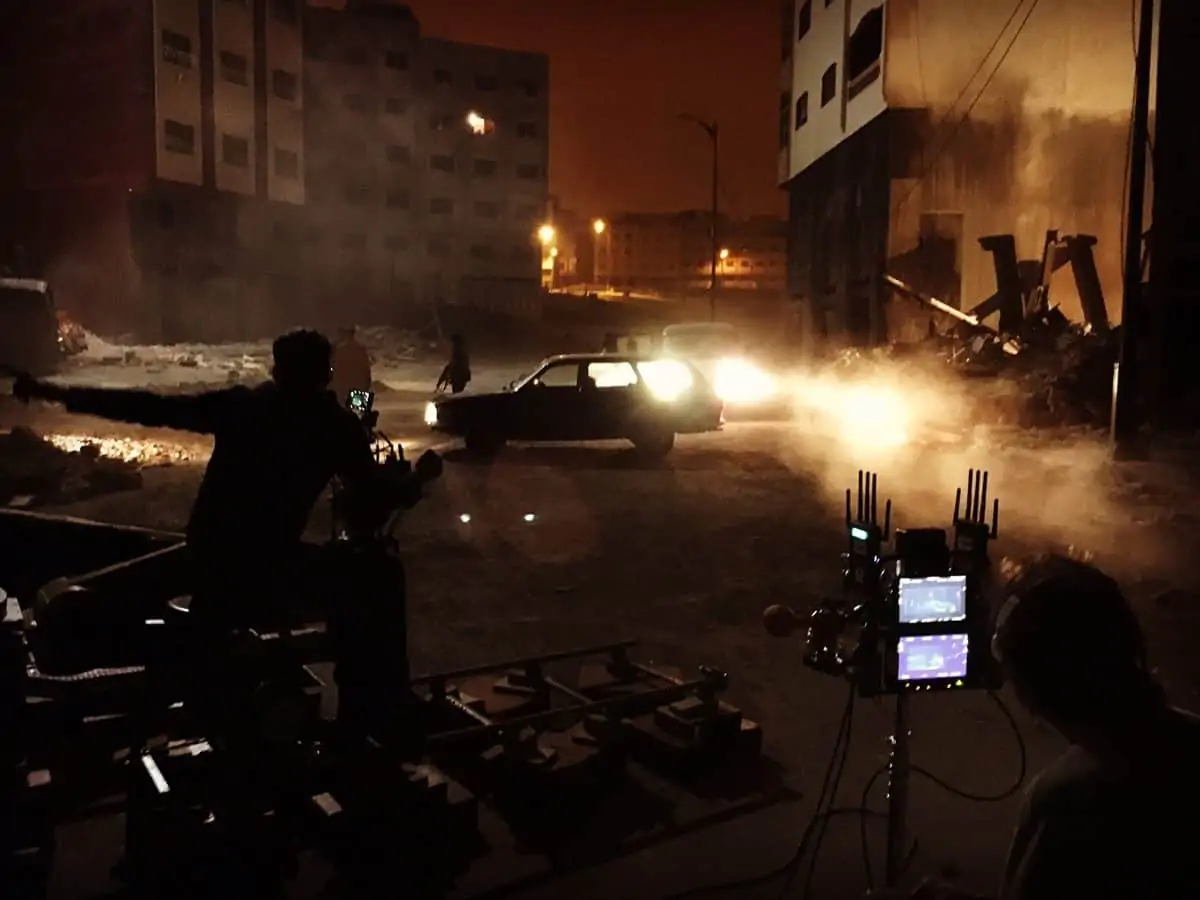
“Light doesn't always have to be beautiful; it needs to serve the story,” observes Charpentier. “The scene where the terrorists get the guy out of his cell to bring him to the Green Line [a line of demarcation that separated the Muslim and Christian sections of Beirut] was only lit by three flashlights. The tech room inside the U.S. embassy basement was shot completely with practicals: fluorescents 765 in the ceiling, 3200K desk lights, 10000K light in the glass box and the camera at 4300K. We shot that at f/2.8 at 800 ISO and added some ambient haze.”
“For our night scene with the helicopter,” continues Charpentier, “I used 4x 400W mercury boxes on top of the building so I could frame them in the shot and shoot straight into the light. I put a PAR can on the Christian cross on the building, a green practical on the far wall and added a big smoke machine at the far back. It was shot on a Kowa lens at f/2.8 at 800 ISO at 3200K. The office inside the embassy was shot only with practicals. We shot the scene after 11 A.M. so the sun was over the building and the windows would have the same light direction – blue-sky light. I put all of the practicals on dimmers and some ambient haze in the room; that was shot on Elite lenses at iris 4.”
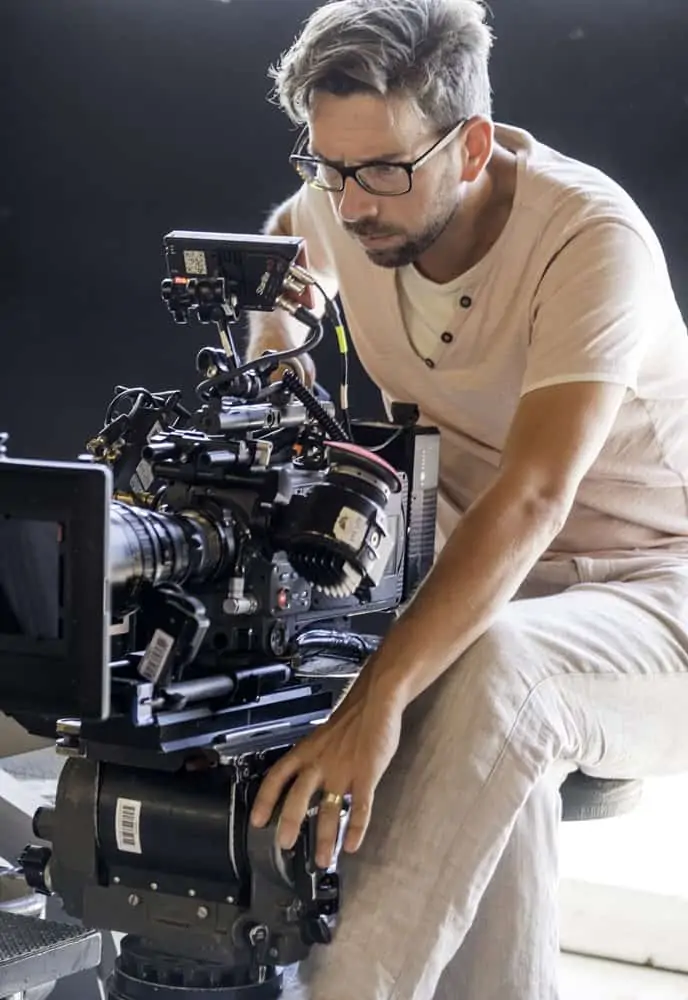
"For the bombs that went off we added Dino lights on dimmers; they went in two opposite angles, so we had extra generators to power those. I used another SkyPanel on the building where the sniper is.
I lit the whole set 360 degrees so I had complete freedom with the camera and our bombs could go off at any time in every shot if needed."
- Björn Charpentier SBC on lighting
the film's shootout finale
“For the opening and closing of the film we used original 8mm footage from Beirut in the ‘70s and ‘80s,” explains Charpentier. “We shot everything on ALEXA ProRes 4444 XQ in 2K anamorphic.” The colour pallet was devised in-camera rather than relying on the DI. “I don’t want to create the look of the movie in post. It has to happen onset. A lot of my time in prep was spent with the art department talking about colour, shiny surfaces, reflections, and mirrors. Together with production designer Arad Sawat and supervising art director Ian Bailie we worked hard to achieve that.” Grading took place at Technicolor New York with colourist Sam Daley. “In the DI, I mainly worked on the black levels and the saturation. All the rest was as it should have been.”
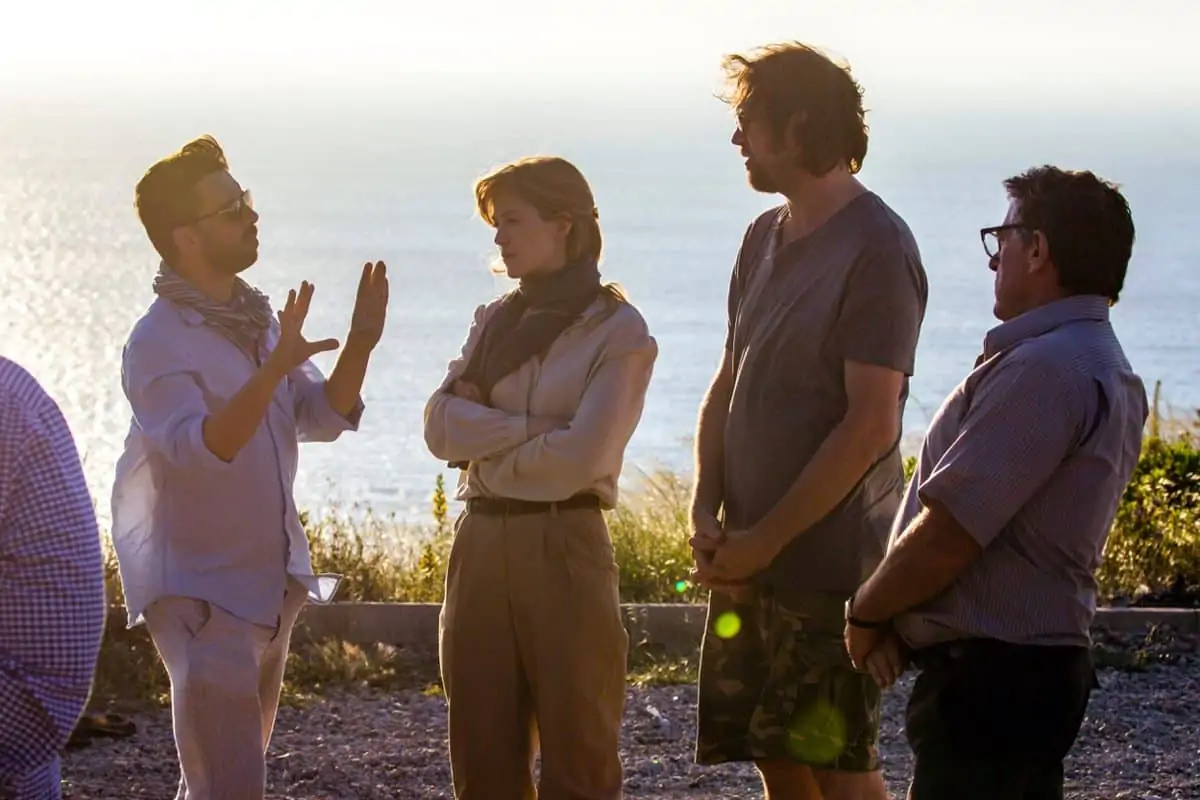
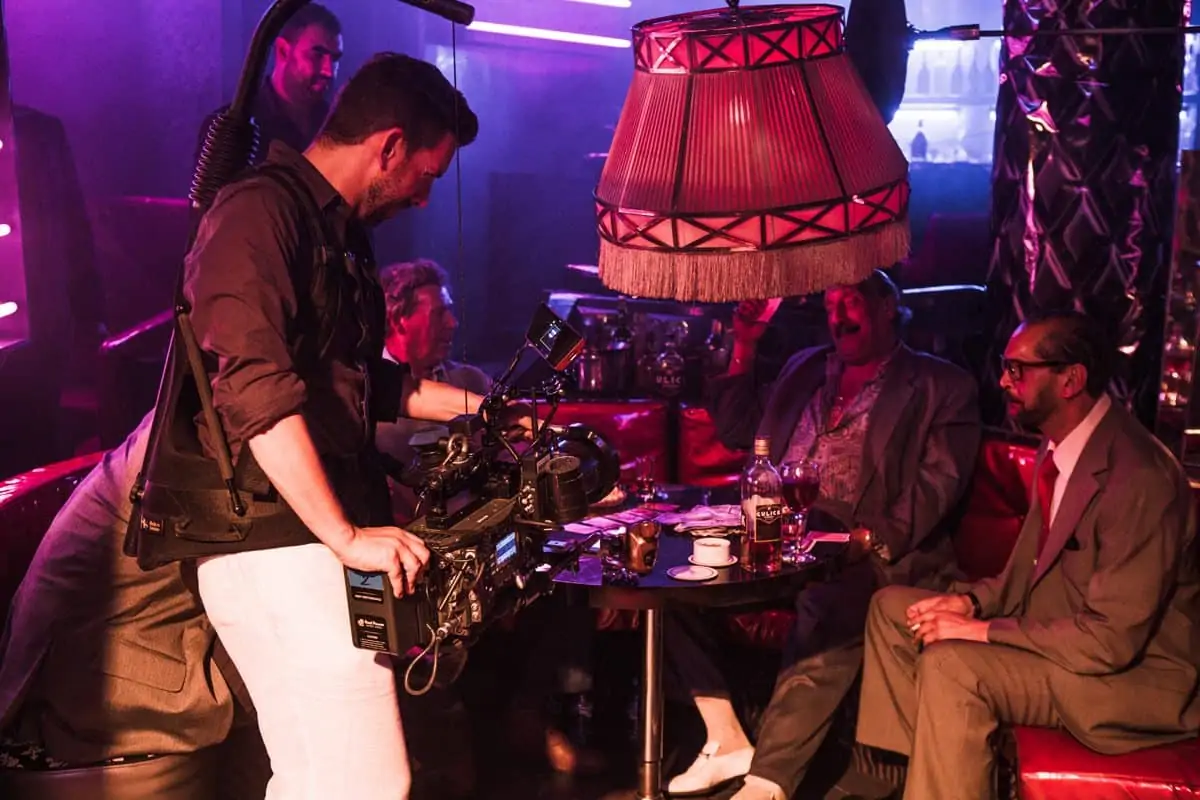
The shootout finale was captured over a period of two nights using 48 fps high-speed photography. “I didn’t want to have a moonlight effect so on top of the first building in the far back, I added a SkyPanel 60 that was mercury gelled on the top to have a continuation of that streetlight.” Dino lights were placed on several buildings in the background and smoke was added to silhouette the action. “For the bombs that went off we added Dino lights on dimmers; they went in two opposite angles, so we had extra generators to power those. I used another SkyPanel on the building where the sniper is. On the ground, my gaffer was walking next to me with a small LED light with diffusion to add something to the actors’ eyes. I lit the whole set 360 degrees so I had complete freedom with the camera and our bombs could go off at any time in every shot if needed.”
Frequent collaborator 1st AC Iura Bustiuc came over from Romania while gaffers included Tom Van den Abbeele (prep), Patrick Bramucci, Florin Niculae and Thomas Hollaus. “We all stayed in the same hotel so there was a brotherhood among the cast and crew,” states Charpentier. “I lit as wide as I could, so that there was no real downtime for the cast. They even came over to thank me because they could stay in character the whole time; that is the best compliment a DP can get!”



